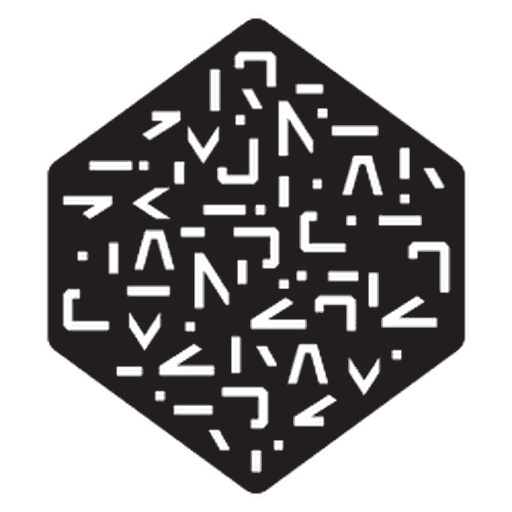Tether vs Numeraire – Price, Market Cap & Performance Compared
Which coin performs better – Tether or Numeraire?
We compare the current price (1 $ vs 16.21 $), market cap (173 087 463 220 vs 129 848 025) and all-time high (1.32 vs 93.15).
Find out which one stands out right now!
Tether is currently trading at 1 $, while Numeraire stands at 16.21 $. These cryptocurrencies differ not only in price but also in market presence.
The market cap of Tether is around 173 087 463 220, and Numeraire has about 129 848 025. Their respective all-time highs are 1.32 for Tether and 93.15 for Numeraire.
Daily trading volume and the 24h price change (-0.00189 % vs -2.68914 %) also offer key insights.
Compare all metrics now and see which coin fits your investment strategy best!
Tether
Tether is a widely-used stablecoin in the cryptocurrency market, designed to maintain a value equivalent to a traditional currency like the US dollar. It provides traders and investors with a stable asset to navigate the volatile crypto landscape, offering a flexible means to move funds quickly between exchanges. Despite its popularity, Tether has faced scrutiny regarding its reserve holdings and transparency, sparking ongoing debates within the financial community.
more informationNumeraire
Numeraire is a unique cryptocurrency that empowers data scientists to participate in a global hedge fund competition by utilizing their predictive models. By staking Numeraire tokens, participants align their incentives with the performance of the fund, creating an innovative ecosystem that merges finance and artificial intelligence. As a governance token, Numeraire not only facilitates decision-making within the platform but also fosters community engagement and collaboration.
more information

|

|
|
|
|
General Information |
|
|---|---|
|
Title
Tether
|
Title
Numeraire
|
|
Symbol
usdt
|
Symbol
nmr
|
|
Whitepaper
|
Whitepaper
|
|
Website
|
Website
|
|
Community
-
|
Community
|
|
Last Updated
2025-09-24 23:29
|
Last Updated
2025-09-24 23:29
|
Price Data |
|
|---|---|
|
Current Price $
1 $
|
Current Price $
16.21 $
|
|
High 24h
1 $
|
High 24h
16.97 $
|
|
Low 24h
1 $
|
Low 24h
15.85 $
|
|
Price Change 24h
-0.00002 $
|
Price Change 24h
-0.44786 $
|
|
Price Change % 24h
-0.00189 %
|
Price Change % 24h
-2.68914 %
|
Market Data |
|
|---|---|
|
Market Cap
173 087 463 220
|
Market Cap
129 848 025
|
|
Total Volume
95 616 120 249
|
Total Volume
53 653 182
|
|
Market Cap Change 24h
288 328 065
|
Market Cap Change 24h
-3 724 049
|
|
Market Cap Change % 24h
0.16686 %
|
Market Cap Change % 24h
-2.78804 %
|
|
Return on Investment (ROI)
-
|
Return on Investment (ROI)
-
|
Supply and Availability |
|
|---|---|
|
Circulating Supply
173 039 417 063
|
Circulating Supply
8 007 701
|
|
Total Supply
173 039 417 063
|
Total Supply
10 662 741
|
|
Max Supply
-
|
Max Supply
11 000 000
|
Historical Data |
|
|---|---|
|
All Time High (ATH)
1.32
|
All Time High (ATH)
93.15
|
|
ATH Change %
-24.39867 %
|
ATH Change %
-82.58413 %
|
|
ATH Date
2018-07-24 00:00
|
ATH Date
2021-05-16 10:29
|
|
All Time Low (ATL)
0.57252
|
All Time Low (ATL)
2.06
|
|
ATL Change %
74.71457 %
|
ATL Change %
685.9077 %
|
|
ATL Date
2015-03-02 00:00
|
ATL Date
2018-11-27 00:00
|
Tether
Understanding Tether: A Stablecoin Powerhouse
Tether (USDT) is a leading name in the world of stablecoins, a class of cryptocurrency designed to facilitate transactions by maintaining a stable value. Unlike volatile cryptocurrencies like Bitcoin or Ethereum, stablecoins like Tether aim to provide users with the stability of fiat currency, while still leveraging the benefits of blockchain technology.
The Mechanism Behind Tether's Stability
Tether achieves its stability by pegging its value to traditional fiat currencies, primarily the U.S. Dollar. Each Tether token is reportedly backed by an equivalent amount of fiat currency held in reserve. This 1:1 backing mechanism is key to maintaining the coin's stable value, as reflected in its market price which typically hovers around 1 USD.
Historical Development and Milestones
Tether's inception dates back to 2014, and since then, it has played a pivotal role in demonstrating the practical use case of stablecoins within the crypto ecosystem. Its journey has seen significant milestones, including reaching its all-time high of $1.32 in July 2018, and experiencing its low at $0.572521 in March 2015. These deviations, while noteworthy, are rare occurrences in Tether's overall history, underscoring its primary objective of price stability.
Advantages of Using Tether
The primary advantage of Tether is its stability, making it a safe harbor for investors during times of high volatility in the broader cryptocurrency market. By offering price predictability, it facilitates more efficient trading, lending, and arbitrage, making it an indispensable tool for crypto exchanges and users alike. Moreover, Tether's utility is further enhanced by its widespread acceptance and high liquidity.
Challenges and Controversies
Despite its widespread use, Tether has faced scrutiny regarding its claims of full fiat backing. Critics have raised concerns about transparency, regulatory challenges, and the adequacy of its audited reserves. These issues have occasionally prompted regulatory attention and calls for greater transparency and accountability from Tether’s management.
Future Outlook for Tether
The future of Tether rests heavily on its ability to maintain trust and transparency with users and regulators alike. As the crypto market matures, Tether is expected to continue playing a significant role, particularly if it can navigate the evolving regulatory landscape successfully. Its position as a stablecoin market leader suggests that it will remain a cornerstone in crypto trading, offering a reliable alternative to more volatile assets.
In conclusion, Tether stands out as a critical tool within the cryptocurrency space, providing much-needed stability for traders and businesses. Its ongoing relevance will depend on its adaptability to regulatory demands and its continued assurance of transparency and full reserve backing to its user base.
Numeraire
An Introduction to Numeraire (NMR)
Numeraire (NMR) is an intriguing cryptocurrency that aims to revolutionize the way machine learning models are harnessed for financial predictions. Launched by Numerai in 2015, it operates on the Ethereum blockchain and is designed to incentivize data scientists and researchers to develop machine learning models that predict the stock market. This article delves into the historical performance of NMR, its advantages and disadvantages, and its potential future trajectory.
The Evolution of Numeraire
Numeraire started as an innovative concept intending to decentralize hedge fund management. By pooling models developed by data scientists worldwide, Numerai created a platform that allows for crowdsourced predictions on the stock market. The token, NMR, incentivizes participants to submit their models accurately. Over the years, the price of NMR has seen significant fluctuations, reaching an all-time high (ATH) of $93.15 on May 16, 2021, before slumping to $15.06 as of October 30, 2023. This decline reflects the volatile nature of the cryptocurrency markets and the challenges faced by innovative projects in maintaining user engagement and market interest.
Advantages of Numeraire
One of the primary advantages of Numeraire is its unique approach to data science and financial forecasting. The decentralized model enables numerous data scientists to contribute their predictions, which can lead to more accurate market forecasting than traditional methods. Additionally, the structural incentives provided by NMR help to ensure that only effective models get rewarded, fostering a competitive environment. The use of blockchain technology also enhances transparency, allowing participants to track the performance of their contributions securely.
Disadvantages of Numeraire
Despite its promising potential, Numeraire faces several challenges. The main concern is the volatility commonly associated with cryptocurrencies, which can cloud the viability of the NMR token as a stable investment. Furthermore, as a relatively niche project, Numeraire may have limited adoption compared to more mainstream cryptocurrencies, which could hinder its long-term growth prospects. Additionally, the reliance on complex machine learning models requires a certain level of expertise that may not be accessible to the average investor.
Market Performance and Historical Trends
The performance of NMR has been marked by extreme volatility, with significant price movements reflecting broader market cycles and the viability of Numerai's ecosystem. The transition from an all-time low (ATL) of $2.06 in November 2018 to the ATH in mid-2021 showcases the potential for substantial gains. However, the drastic pullback following the ATH serves as a reminder of the risks investors face in the space. As of late October 2023, NMR is priced at $15.06, which represents an 83.83% decrease from its peak, yet still shows a remarkable increase from its ATL.
Future Outlook and Conclusion
The future of Numeraire appears to be a double-edged sword. On one hand, if Numerai can continue to attract talented data scientists and maintain its unique position in the market, it could see significant growth. However, the ever-evolving cryptocurrency landscape, competition from other platforms, and potential user fatigue could pose challenges. Investors should keep a close eye on the performance of the platform and the ongoing development of the NMR token. As the market matures, it will be crucial for Numeraire to adapt and innovate to secure its place in the world of cryptocurrencies.
In conclusion, while Numeraire presents a novel approach to financial predictions, its volatility and niche nature mean that it is not without risk. Investors and data scientists alike should weigh the pros and cons carefully, keeping in mind both the potential rewards and the challenges that lie ahead.

